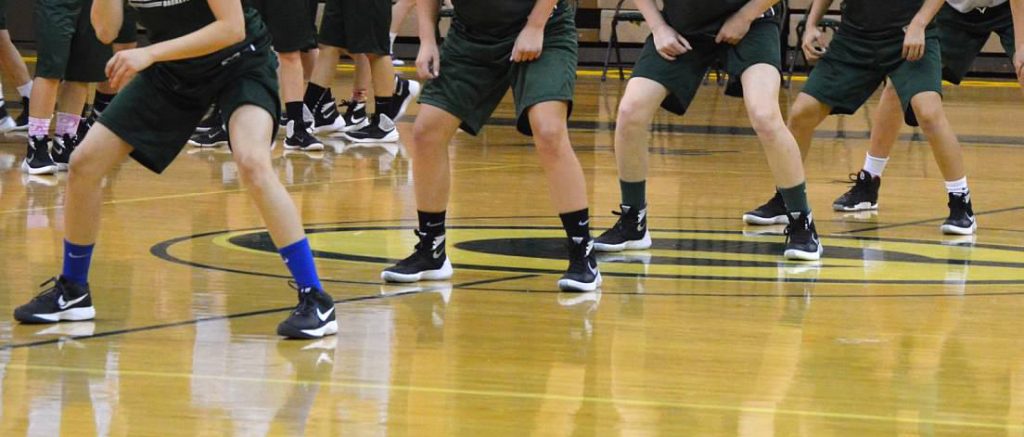One of the most common phrases said in athletics is Bend Your Knees. It is an important phrase with good reason. When an athlete bends their knees correctly they are in a better position to move quicker in any direction. Of course there is more involved, but you get the point.
There is another reason bending the knees is so important …
When looking at head-to-toe or toe-to-head, the body is linked together by interconnecting muscle, tendons, and fascia (envelopes the soft tissues). So, if there is an issue with your right foot, then over time you could possibly have an issue with your neck, left shoulder, or abdomen. It is all because the body compensates for each movement that occurs at different joints. If your feet pronate are over-pronate or are stuck in pronation, then it sets off a chain reaction throughout the rest of the body. The knees and hips are affected; thus the low pelvis changes its position and this affects the spine which can affect the shoulders and how the head sits on the skeletal system.
Wow! All this from the feet not being correct….
Why Bend Your Knees?
Let’s move into why bending your knees are so important. Keep in mind, ‘bend your knees’ means having the ankles and hips in the correct position as well. If the knees were bent but the hips are not pushed back and the ankles are not properly flexed, then bending your knees might not be a good thing.
Exercises my athletes routinely perform are “stability landings”. The stability landings are performed with both one and two feet, but primary focus is on one foot. When an athlete lands on one leg and the knees are properly bent and the hips are pushed back, then the muscles that stabilize the knee position are much more active and able to do their job. But when an athlete lands and barely bends the knees or pushes the hips back, the muscles of the hips can’t really do their job of stabilizing knees position well. It has been studied that if the hips are bent at a 20 degree bend the IT band will become tightened due to its connection into the glutes. This action helps to stabilize the knees because of the IT bands attachment around the knee joint.
When my athletes finish their warm up routine they continue into an extended warm up called stability landings. This is when they perform jumps, leaps, and hops holding the landing for a second or two. This allows me to make corrections and the athletes to feel the correct positions. Eventually the correct landings become the default movement pattern of the athlete.
To recap, bending the knees are so important because of the stability factor plus the advantage of moving quicker as an athlete.
Stability Landings Exercises
Here are a few exercises to work on stability landings:
- Forward, angular, and lateral leap and holds. The athlete will perform 1-2 sets of 6-10 on each leg.
- Drop and hold- the athlete starts tall on their toes and drops down into a one leg squat and hold.
- Low Box Stability- the athlete leaps or hops up onto a 4-6 inch box and holds the landing under control. We than add side leaps or hops.
- Split squat and hold- even though the back leg is on the ground on the split squat landing the lead leg is supporting most of the weight and must stabilize. We start tall and drop to a split (lunge) squat position.
There are many more exercises, but these are staples. These main stability landing exercises will go a long way to improving your athletes’ ability to control their body.
Please understand that raw quickness often occurs when athletes reactively reposition their foot to quickly explode in a new direction. This occurs with a fairly straight knee joint which allows elastic energy to take over. The point is, bending the knees is for safety and proper positioning on landing.
Want even more great insight as to how these exercises should be performed?
In the highly acclaimed Ground Breaking 2, there is great details on stability training….check it out, Ground Breaking 2 now.

